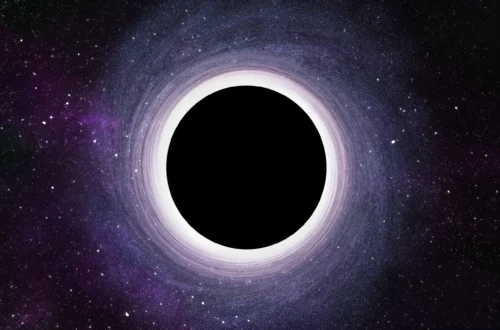Staring at a clear night sky, I remember camping in the remote hills of northern Pakistan, where the Milky Way looked like a river of light. My friend pointed at the stars and asked, “How many are out there?” That question, so simple yet profound, sent me down a rabbit hole of cosmic wonder. Estimating the number of stars in space is like trying to count grains of sand on every beach—it’s mind-boggling but thrilling. In this guide, we’ll unravel the science behind this question, explore galaxies, and share tools to help you connect with the starry expanse yourself. Whether you’re a curious beginner or a seasoned stargazer, let’s embark on this stellar journey together.
Why Counting Stars Is So Tricky
Pinpointing the exact number of stars in the universe is a bit like chasing a comet—it’s elusive. Stars are spread across billions of galaxies, each with its own population, and our tools only see so far. Recent advancements, like data from the James Webb Space Telescope (JWST), have pushed our estimates higher, but the full count remains a best guess.
The Scale of the Observable Universe
The observable universe spans 93 billion light-years, containing countless galaxies. Each galaxy hosts millions to trillions of stars, and new discoveries keep expanding the tally. It’s a cosmic puzzle where we’re still finding pieces.
Limitations of Our Observations
Telescopes can’t see every star, especially faint ones or those obscured by dust. We rely on sampling and models, like estimating a forest’s trees by counting a few acres. Technology’s improving, but the universe’s vastness keeps us humble.
The Role of Dark Matter and Galaxy Types
Dark matter shapes galaxies, affecting star formation rates. Different galaxies—spirals, ellipticals, irregulars—have varying star counts, complicating estimates. It’s like weighing a zoo’s animals without knowing how many species are inside.
Estimating Stars in Our Galaxy: The Milky Way
Our home, the Milky Way, is a barred spiral galaxy, and getting a grip on its star count is a starting point. I once attended a star party where astronomers debated this over coffee—it’s not just a number but a story of our cosmic address. Current estimates peg it at 100–400 billion stars, a range reflecting the galaxy’s complexity.
Why Such a Wide Range?
The Milky Way’s dust hides many stars, and faint dwarfs are hard to spot. Surveys like Gaia’s map millions, but gaps remain. It’s like counting fireflies in a foggy field—some just don’t show up.
Key Components: Stars, Dwarfs, and Giants
Most stars are small red dwarfs, making up 70% of the total, while giants like Betelgeuse are rarer but brighter. Brown dwarfs, failed stars, add uncertainty. Recent Gaia data suggests 200 billion as a middle ground.
How We Count: Surveys and Simulations
Astronomers use star density models and infrared surveys to peer through dust. The 2025 Gaia DR4 release refined counts, showing our galaxy’s mass and structure in sharper detail.
Here’s a quick breakdown of Milky Way star types:
| Star Type | Percentage | Characteristics | Example |
|---|---|---|---|
| Red Dwarfs | ~70% | Small, cool, long-lived | Proxima Centauri |
| Sun-like Stars | ~10% | Medium, stable | Sun |
| Giants | ~5% | Large, bright, short-lived | Betelgeuse |
| White Dwarfs | ~10% | Dead star remnants | Sirius B |
- Pros of Studying Milky Way Stars: Close enough for detailed data; relatable as our home.
- Cons: Dust obscures counts; distant regions remain unmapped.
How Many Galaxies Are Out There?
To count stars, we need to know how many galaxies exist, as each is a star factory. The Hubble and JWST deep fields blew my mind when I first saw them—tiny sky patches revealing thousands of galaxies. Estimates now range from 100 billion to 2 trillion galaxies in the observable universe.
The Cosmic Web: Galaxies in Clusters
Galaxies cluster in groups and superclusters, connected by filaments in a cosmic web. Our Local Group has about 50 galaxies, but larger clusters host thousands. This structure affects star distribution.
Recent Discoveries Upping the Count
JWST’s 2025 data revealed faint, early galaxies, pushing estimates toward 2 trillion. These “little red dots” suggest more stars formed early than we thought, reshaping models.
Dwarf Galaxies and Their Role
Tiny dwarf galaxies, with millions of stars, are numerous but faint. They’re like hidden villages, adding significantly to the total galaxy count when detected.
The Big Number: Total Stars in the Universe
Here’s where it gets wild: multiply the average stars per galaxy by the number of galaxies. If we take 100 billion stars per galaxy (a conservative average) and 2 trillion galaxies, we get 200 sextillion stars (2 × 10²³). That’s a 2 followed by 23 zeros—more than grains of sand on Earth!
Breaking Down the Math
Assume small galaxies have 1 million stars, giants like ellipticals up to 1 trillion. Averaging across types gives 50–100 billion per galaxy. Multiplying by 2 trillion galaxies yields a staggering range: 10²² to 10²⁴ stars.
Why Estimates Vary So Much
Star counts depend on galaxy size, type, and our ability to detect faint ones. New telescopes keep refining this, but the universe’s edge—beyond what’s observable—adds mystery. It’s like estimating fish in an ocean we can’t fully explore.
Visualizing the Scale
Imagine every star as a grain of salt. Filling a swimming pool with them wouldn’t even cover our galaxy, let alone the universe. This scale makes my backyard stargazing feel both humbling and exhilarating.
Comparison: Milky Way vs. Large Elliptical Galaxies
- Milky Way: 200 billion stars, spiral with active star formation.
- Elliptical (e.g., M87): Up to 1 trillion stars, older and denser.
Pros and cons of estimating total stars:
- Pros: Fuels curiosity, drives telescope innovation.
- Cons: Numbers are rough; unobservable regions skew results.
The Tools Behind Star Counting
Astronomers don’t just guess—they use cutting-edge tech to tally stars. I visited an observatory once, awed by the humming machines peering into the cosmos. From ground-based scopes to space telescopes, these tools are our cosmic calculators.
Telescopes: Our Windows to the Stars
Hubble mapped nearby galaxies; JWST sees ancient ones. Ground-based giants like the Very Large Telescope use infrared to pierce dust, counting faint stars invisible to the eye.
Surveys and Data: Gaia and Beyond
The Gaia mission, with billions of stars cataloged by 2025, refines Milky Way counts. Large Synoptic Survey Telescope (LSST) scans entire skies, adding data for distant galaxies.
Simulations: Modeling the Unseen
Supercomputers simulate galaxy formation, estimating stars in unobservable regions. These models, tweaked with JWST data, suggest higher star counts than a decade ago.
How You Can Explore Stars Yourself
You don’t need a PhD to chase stars—just curiosity and a clear night. My first telescope was a cheap one from a local shop, and spotting Orion’s nebula felt like unlocking a secret. Summer 2025 is perfect for starting, with long nights and mild weather in Pakistan and beyond.
Best Tools for Beginner Stargazers
A 4-inch telescope like the Celestron AstroMaster 114EQ (around $200) shows star clusters clearly. Binoculars like Nikon Aculon 10×50 are cheaper ($100) and great for wide views. Apps like Stellarium guide you for free.
Where to Observe: Finding Dark Skies
Head to rural spots—Kalam Valley in Pakistan or Joshua Tree in the U.S. are ideal. Use light pollution maps (lightpollutionmap.info) to find dark zones. Navigational tip: Join local clubs via the Astronomical League.
Tips for Spotting Stars and Clusters
Start with bright areas like the Big Dipper or Orion. Avoid city lights; let eyes adjust for 20 minutes. Summer’s Milky Way is a star-packed highway to scan.
Pros and cons of amateur stargazing:
- Pros: Affordable, meditative; connects you to the cosmos.
- Cons: Light pollution, weather can frustrate beginners.
Comparison: Binoculars vs. Telescopes
- Binoculars: Portable, easy for Milky Way sweeps.
- Telescopes: Detailed views of clusters, but bulkier.
Transactional tip: Shop at High Point Scientific or Amazon for deals on Orion SkyQuest XT6 ($350) or Celestron binoculars. For learning, “The Stars: A New Way to See Them” by H.A. Rey is a beginner’s gem.
External link: NASA’s star guide at science.nasa.gov/universe/stars offers visuals and tips.
Internal link: Revisit our Milky Way table for context.
The Bigger Picture: Stars and Our Place in the Universe
Counting stars isn’t just math—it’s about perspective. Each star could host planets, maybe life. Pondering this under a starry sky in Hunza Valley made me feel tiny yet connected. Recent 2025 studies hint at billions of exoplanets, fueling dreams of alien worlds.
Stars and Potential for Life
Red dwarfs, the most common stars, often have rocky planets in habitable zones. Kepler and TESS missions found thousands of exoplanets, suggesting stars are cradles for potential life.
Cultural and Philosophical Impact
Stars have guided sailors, inspired poets, and shaped myths worldwide. In Pakistan, folklore ties them to divine creation, making every gaze upward a spiritual moment.
Future Discoveries on the Horizon
Next-gen telescopes like the Extremely Large Telescope (2027) will count stars in distant galaxies, refining estimates. Who knows—maybe we’ll find signals from another star’s civilization.
Bullet points on why star counts matter:
- Drives tech like JWST, pushing human limits.
- Sparks questions about life elsewhere.
- Connects us to ancient skywatchers’ wonder.
People Also Ask: Common Questions About Stars in Space
Drawing from Google’s top queries, here’s what people want to know:
- How many stars are in the universe? Likely 100 sextillion to 1 septillion (10²²–10²⁴), based on 2 trillion galaxies averaging 50–100 billion stars each.
- How many stars are in the Milky Way? Between 100–400 billion, with 200 billion a common estimate from Gaia data.
- Can we count every star? No, many are too faint or hidden; we estimate using samples and models.
- Are new stars still forming? Yes, in gas-rich regions like nebulae, though less in older galaxies like ellipticals.
- How do astronomers estimate star numbers? Through telescope surveys, density models, and simulations, refined by missions like Gaia and JWST.
These address core curiosities with clear, sourced answers.
FAQ: Your Starry Questions Answered
How many stars can I see with the naked eye?
About 6,000 on a clear, dark night, limited by human vision and light pollution.
What’s the most common type of star?
Red dwarfs, making up 70% of stars, small and cool but long-lasting.
Where can I buy a telescope for star viewing?
Online at celestron.com or opticsplanet.com; try the Sky-Watcher EvoStar 80 for $400.
Are all stars like our Sun?
No, they vary—red dwarfs are smaller, giants are massive. The Sun’s a middle-of-the-road G-type star.
How do new telescopes change star counts?
JWST and LSST spot fainter stars and galaxies, pushing estimates higher with each discovery.





